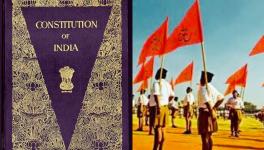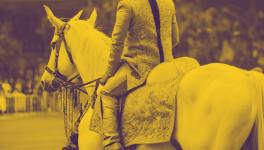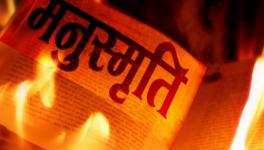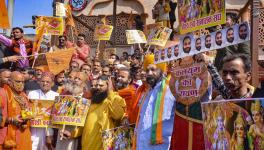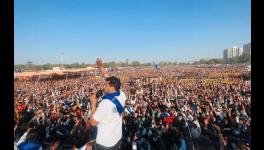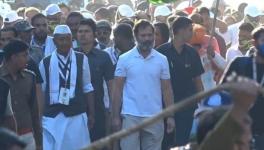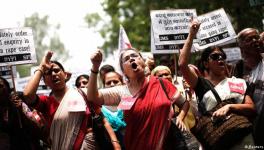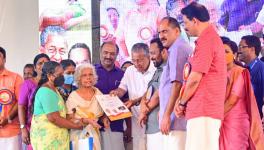Gau Raksha and the War against India's Poor
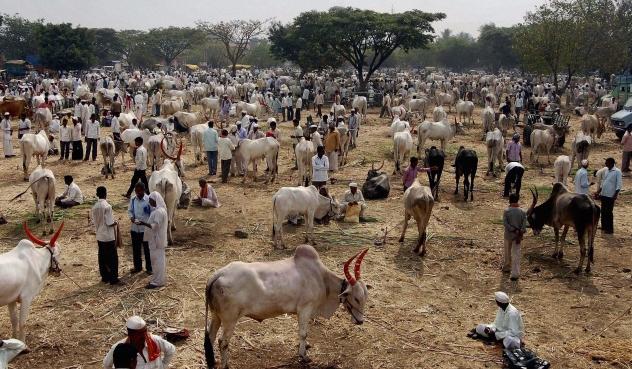
Gau Raksha and the War against India's Poor
The toxic activities of gau raksha samitis that have sprung up all over the country has led to increased attack on not only Muslims but also dalits. This was the pattern in the past, and also the pattern today. Even as the protests against the Una attacks rocked the country, Bajrang Dal targeted dalits in Chikmaglur in Karnataka, the eighth such attack in the last two years. This was followed by the beating of two dalit men in Lucknow for skinning a dead cow. A few years back, under the NDA government, five dalits were killed in Badshapur in Haryana, only 60 kilometres from Delhi, again for skinning a dead cow.
The RSS-Hindutva agenda is to homogenise a Hindu identity based on the hatred towards Muslims. In their view, in the formation of an Indian identity, Hindus have to be differentiated from Muslims. That is why the cow is the symbol of this identity: it is not that the cow is sacred to “us” that is important, but it is sacred to “us” and the Muslims eat it. It differentiates Muslims from Hindus and makes Muslims “our” enemy. This what led to the lynching of Akhlaq in Dadri, and other numerous attacks we have seen on Muslims.
Cow vigilantism has been active for quite some time, but had little traction or support from the people. As long as the State was not complicit in this vigilantism, it could be contained. It is the rise of BJP and its entry into State power – in various states and now at the centre that has changed this equation. It is emerging as a major form of mobilisation in rural areas in trying to forge a Hindu unity and isolate the Muslims. If riots earlier were the instrument used by the Hindutva forces in urban areas, it is the mobilisation in the guise of protecting the “mother” cow that is becoming a major instrument of Hindu mobilisation and riots in rural areas. The attempt is to isolate and disempower the Muslims politically, similar to what has happened in Gujarat.
Though this vigilantism “works” as a weapon against the Muslims, it has the inherent danger of fracturing Hindu society. Hindutva's cow vigilantism has now brought into open the deep fissures that exist within the Brahmanical order. If cow is indeed to be venerated, how come all those who work for the larger cattle economy are then polluted by this work? How come if cow is indeed their “mother”, why dalits, and not gau rakshaks, are the ones burying the dead cows?
The relationship between human beings in the Brahmanical order is determined by the labour they do. For feeding the upper castes milk and producing footwear they use, other castes are needed that tend to the cattle and skin and dispose off the cow once it dies. The skin is then worked on by others for producing leather goods. All those who labour in production of any kind – in productive labour such as producing milk or leather goods – are “polluted”. Those who simply consume such products of others' labour – drink milk or wear leather goods – remain “pure”. Producers are polluted; the parasites that live off the surplus of others, retain their purity! This is the complete hypocrisy of the Brahmanical order.
While those who support a casteist Brahmanical order would have us believe that the caste society was built on “merit”, it was actually built on a division of labour in which the ones doing no labour were at the top, while all others were hierarchically arranged based on the kind of labour they did. Thus disposing dead animals and manual scavenging, essential for other castes, became the most polluting, and consigned to the bottom of the pyramid. This arrangement was an instrument of extracting labour from different communities as a part of surplus exploitation.
This did not mean that the extraction of labour was the only form though which surplus was extracted. There were various other forms of surplus extraction as well. The key difference in the Indian form of caste-feudal society is that while European feudalism tied the serfs to the land or their lords, in India, the working people were hereditarily tied to their occupation. They could go from place to place if they wanted, but they were not allowed to leave their occupation.
Various explanations have been given of why beef eating, which was permitted in Vedic times, and was even a part of sacrificial rituals, was banned later. The most widely accepted explanation is provided by Marvin Harris, the well-known anthropologist. He has said that it is the importance of the bulls and oxen in the agrarian economy of India that created the beef ban. If milk was the issue, then buffalo slaughter, which is much more important for milk production, would also have been banned. It is clearing of forests and settled agriculture in the Gangetic valley that created this need for cow protection. Cows not only gave milk but also gave birth to the male calves, who then were India's tractors and threshers in older times.
The gau rakshak samitis, arose in the late 19th century not only as an anti-Muslim mobilisation but also as an instrument of mobilising upper caste, particularly Brahmin hegemony. All these bodies were formed as Hindu Sabhas, which later joined together to form the Hindu Mahasabha.
The Hindutva forces tried to incorporate the other backward castes – the goalas, the ahirs, the gujjars, etc – and co-opt them into the ranks of gau rakshaks. The flayers and the leather workers who are the most “polluted”, as they deal with dead animals and dead animal skins, were not co-opted. So they did not “deserve” to be gau rakshaks; unless they give up their occupation. Quite often, they are also beef eaters: the dead or sick cow would be eaten by these communities. Therefore their being treated as “equivalent” to Muslims.
Bezwada Wilson, the leader of the Safai Karmacharis and a recent Magsaysay winner, speaking against the beef ban in Idea of India Conclave in May this year, identified it as an attack on the poor, because it deprives them of a major source of proteins. Various government bodies admit that beef eating is also present among the Hindus, particularly dalits, tribals and some sections of the OBC's.
The attack on the Muslims in the name of cow protection has also become an economic war on them. That is why the attack on beef eating has now spilled over to skinning dead cows, transporting skins and meat, and even cattle trade.
The consequence of attacks on cattle traders is that a large number of cows and bulls past their prime are being simply abandoned, particularly in states that have seen severe drought. The price of cattle has fallen drastically; transportation of cattle is now much more difficult and has become a high risk activity. Similarly, the production of leather goods and export of “beef”, which in India is largely buffalo meat, has come down quite significantly. According to APEDA, the government body dealing with agriculture and processed food exports, the export of buffalo meat has come down in 2015-2016 by almost 11 percent in just one year. There is a similar drop of 10 percent of India's leather goods exports as well. The physical attacks on cattle traders and flayers is also an attack on India's economy.
There are reportedly 2.5 million Muslims and dalits in India's leather industry. So this attack on cattle and skin trade is also an attack on the livelihood of Muslims and dalits, who constitute the bulk of the workers in these trades.
RSS-BJP's beef agenda may sound as a good instrument to communalise society, particularly in UP. Clearly, these are electoral ploys to marginalise the Muslims in the coming elections. Dalit protests now show the danger of such a path. The BJP has to address the dalit slogan, “If she is your mother, you bury her”. BJP has no answer to this.
Get the latest reports & analysis with people's perspective on Protests, movements & deep analytical videos, discussions of the current affairs in your Telegram app. Subscribe to NewsClick's Telegram channel & get Real-Time updates on stories, as they get published on our website.









